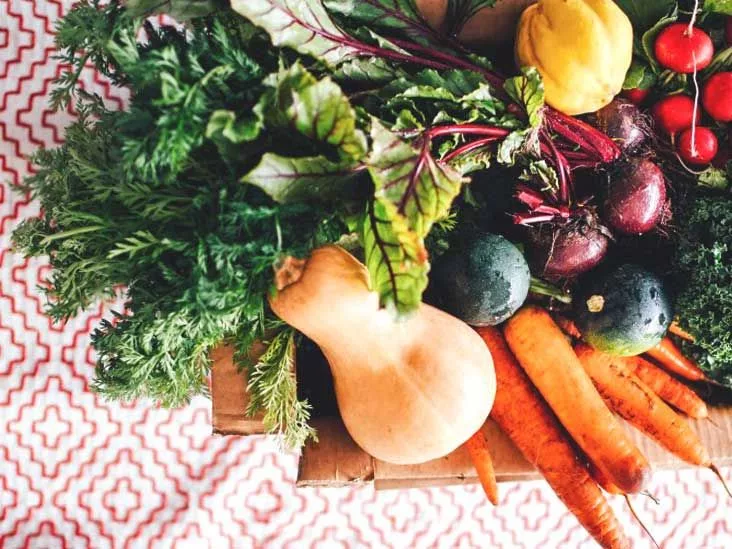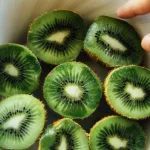Hey there! If you’ve been wondering what’s actually worth buying at the farmers market this October, you’re in the right spot. I’m going to walk you through the very best fall seasonal foods—from crunchy root veggies to sweet apples—plus handy tips on picking, storing, and cooking them. Think of this as a friendly chat over a warm mug of apple cider, not a lecture.
Top Fall Vegetables
When the air gets crisp, the ground starts giving us some of its most colorful gifts. Below are the vegetables that truly shine in the autumn months, along with quick pointers on how to enjoy them.
Which veggies are at their peak in October‑November?
Root crops like beets, carrots, parsnips, and sweet potatoes are bursting with natural sweetness after a few frosts. Cruciferous champions—Brussels sprouts, broccoli, cauliflower, and cabbage—become milder and a bit nutty when the temperature drops. And of course, the winter squash family (butternut, acorn, delicata, spaghetti) is practically the star of fall cooking. Their hard rinds let them stay fresh for months, making them perfect for meal‑prep.
How do I choose the freshest fall veg at the market?
Here’s a quick “field test” you can run while strolling through the produce aisle:
- Weight & firmness: Heavier carrots and beets usually mean they’re packed with moisture. A cabbage head should feel solid and dense.
- Color & leaves: Bright, unblemished skins and healthy, green leaves are good signs. For squash, look for a matte, uncracked rind.
- Aroma: Fresh beets have a sweet, earthy smell; wilted or sour scents suggest age.
According to the USDA seasonal produce guide, choosing heavy, unblemished heads and bright‑colored roots maximizes flavor and nutrition.
What are the top 5 nutrient powerhouses?
| Vegetable | Key Nutrients | Why It Matters |
|---|---|---|
| Beets | Folate, potassium, natural sugars | Supports heart health and provides steady energy. |
| Brussels sprouts | Vitamin C, K, glucosinolates | Boosts immune function and has anti‑inflammatory properties. |
| Sweet potatoes | Beta‑carotene, fiber, vitamin A | Great for eye health and digestion. |
| Kale & collards | Calcium, antioxidants, vitamin K | Helps bone strength and fights oxidative stress. |
| Pumpkin (winter squash) | Potassium, vitamin A, magnesium | Supports blood pressure regulation and skin health. |
Any risks or “gotchas” with fall veggies?
Even the healthiest foods have a few quirks:
- Oxalates in beet greens: If you have a history of kidney stones, enjoy beet roots more than the leafy tops.
- Pesticide residues: Cruciferous veg can carry higher pesticide loads. A quick rinse and, when possible, choose organic.
- Nightshade sensitivity: Sweet potatoes and tomatoes belong to the nightshade family; if you notice joint flare‑ups, keep portions modest.
Best Fall Fruits
Now let’s swing over to the orchard side of autumn. These fruits are why we crave a bite of something crisp or a spoonful of something tart as the leaves turn.
What fruit varieties dominate the fall harvest?
Apples steal the spotlight with dozens of cultivars—from tart Granny Smith to honeyed Honeycrisp. Pears (Bartlett, Bosc) soften beautifully after a short ripening period off the tree. Cranberries bring a bright, tangy zing ideal for sauces. And don’t forget grapes, figs, pomegranates, and persimmons—each adding a unique burst of flavor.
How to pick the ripest apple or pear?
The Country Living fruit guide recommends looking for:
- Firm flesh with a slight give when pressed gently.
- Bright, uniform color for the specific variety.
- No visible bruises or soft spots.
Nutritional benefits vs. possible downsides?
Apples and pears pack fiber and polyphenols that support heart health, while cranberries offer antioxidant power but are high in oxalates—so a handful a day is plenty. For those watching sugar, remember that fruit sugars are natural, but portion control still matters.
Quick‑use ideas (no‑cook)
Here are a few effortless ways to enjoy fall fruit without turning on the oven:
- Apple‑cinnamon overnight oats: Mix rolled oats, almond milk, diced apple, and a pinch of cinnamon. Let sit overnight; breakfast is ready!
- Pear & blue‑cheese salad: Toss sliced pear with mixed greens, crumbled blue cheese, walnuts, and a drizzle of balsamic.
- Cranberry‑orange salsa: Combine fresh cranberries, orange zest, jalapeño, and a splash of honey for a tangy topping on tacos.
Health Benefits & Balanced Risks
Eating in‑season isn’t just a tasty choice; it’s a nutritional one. When produce is harvested at its peak, it contains more vitamins, minerals, and phytonutrients. A 2023 systematic review showed that antioxidant levels in autumn apples and carrots are up to 30% higher than those grown out‑of‑season and stored for months.
But balance is key. While the nutrient boost is real, you still want to be mindful of pesticide exposure, oxalate content, and personal sensitivities. Washing produce thoroughly, opting for organic when possible, and rotating the types of fruits and vegetables you eat each week helps keep everything in check.
Easy Fall Recipes
Ready to put those gorgeous ingredients to work? Below are three starter recipes that are quick, comforting, and perfect for busy weekdays.
What are 3‑easy “starter” recipes for busy readers?
- Roasted Root Veg Medley – Toss diced beets, carrots, parsnips, and a drizzle of olive oil with rosemary. Roast 25‑30 minutes at 400°F. Sweet, caramelized, and ready for any meal.
- Apple‑Cinnamon Overnight Oats – Mix ½ cup rolled oats, ¾ cup milk, ¼ cup diced apple, a dash of cinnamon, and a splash of maple syrup. Refrigerate overnight; garnish with toasted walnuts in the morning.
- Cranberry‑Walnut Quinoa Salad – Cook quinoa, let cool, then stir in dried cranberries, toasted walnuts, chopped kale, and a lemon‑tahini dressing.
How to transform squash into a hearty main?
Winter squash is so versatile. Try a stuffed acorn squash—halve the squash, scoop out a little flesh, fill with quinoa, sautéed kale, feta, and a drizzle of maple. Bake until the flesh is tender (about 35 minutes). Or go classic with a butternut squash soup blended with coconut milk, a pinch of nutmeg, and a swirl of crème fraîche.
What cooking techniques preserve nutrients the best?
- Steaming retains up to 90% of water‑soluble vitamins, especially Vitamin C in broccoli.
- Roasting caramelizes natural sugars, enhancing flavor without added fats.
- Quick stir‑frying over high heat preserves texture while keeping nutrients locked inside.
Seasonal recipe round‑up table
| Dish | Main Ingredient(s) | Prep Time | Cook Time |
|---|---|---|---|
| Roasted Root Veg Medley | Beets, carrots, parsnips | 10 min | 30 min |
| Apple‑Cinnamon Overnight Oats | Apple, rolled oats | 5 min | 0 min (overnight) |
| Cranberry‑Walnut Quinoa Salad | Quinoa, cranberries, kale | 15 min | 15 min |
| Stuffed Acorn Squash | Acorn squash, quinoa, feta | 20 min | 35 min |
Smart Shopping & Storage Guide
Even the best produce can wilt if you don’t know how to keep it fresh. Here’s my cheat‑sheet for buying and storing fall bounty.
Where to buy?
Head to local farmers markets or CSAs for the freshest options—vendors often know the exact harvest date. Grocery stores usually label “local” or “in‑season” next to apples, squash, and carrots. If you’re unsure, ask the produce manager; they love sharing tips.
Seasonality calendar (quick glance)
- Oct‑Nov: Beets, carrots, parsnips, Brussels sprouts, cabbage, apples, pears.
- Nov‑Dec: Winter squash, pumpkins, persimmons, cranberries.
Storage hacks
- Root veg: Keep in a cool, dark pantry (40‑55°F). They’ll last 4‑6 weeks.
- Cruciferous greens: Store in a perforated bag in the fridge’s crisper; use within 2 weeks.
- Squash & pumpkins: A dry, ventilated spot can keep them for 3‑6 months.
- Apples & pears: Refrigerate in a fruit drawer; separate from strong‑smelling foods.
Reduce waste—use the whole plant
Don’t toss beet tops; they make a lovely sauté. Cabbage leaves can be used as low‑carb wraps. Pumpkin skins soften after a short boil and become perfect for soups.
Sustainable & Local Eating – Why It Matters
Choosing fall seasonal foods isn’t just good for your palate; it’s a win for the planet. Shorter food miles mean less fuel burned transporting produce, and buying directly from local farms supports community economies. Plus, seasonal eating naturally encourages variety, keeping your diet interesting all year long.
If you ever wonder whether a particular item truly is “local,” ask the vendor about the harvest date or look for a farm‑direct label. You’ll often discover that a “local” apple was picked just down the road a day ago—far fresher than the same variety shipped from across the country.
Conclusion
There you have it—a warm, friendly tour of the best fall seasonal foods you can find right now. From picking the perfect beet at the market to whipping up a comforting squash soup, the season offers a bounty that’s flavorful, nutritious, and kind to both your wallet and the environment. Why not try one of the quick recipes tonight, or plan a “Fall Produce Night” with friends this weekend? I’d love to hear which ingredient stole your heart—drop a comment below or share your own tips. Happy cooking, and enjoy the harvest!


















Leave a Reply
You must be logged in to post a comment.